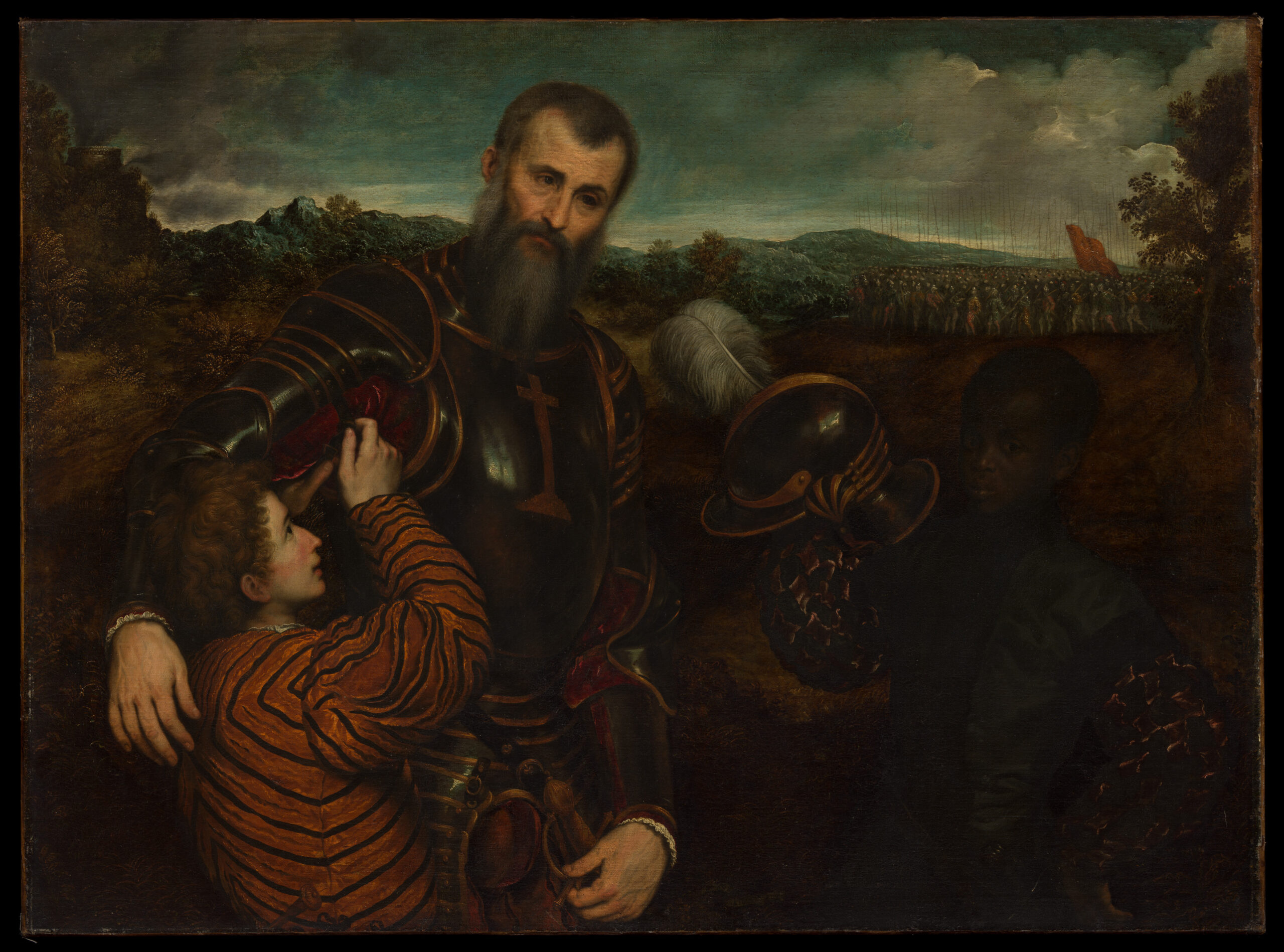The portrait of a man and his helmet discussed at the Brown Bag series. PHOTO CREDIT: The Metropolitan Museum of Art
The University of Rhode Island holds the Brown Bag Series in order to highlight different faculty and graduate students who are able to share their research in areas including public humanities.
Lisa W. Tom, an assistant professor of art history at URI, spoke at the event on Nov. 30 on how the Italian Renaissance sought to discover the “cultural and social weight of holding a helmet in early modern portraiture.”
“My methodology leans towards thick description and micro histories,” Tom said. “Historians tend to site Titian’s portrait of Alfonso d’Avalos as being one of the first major portraits of men in armor that then model later portraits of men in armor which is really great but I’m just interested more so in the dwarf in the lower left who’s holding up his helmet to him.”
Women and pages, or young people employed in an establishment, who were usually young men. Each had a respective role in regards to their place in the portraits, and Tom analyzed this. More specifically, she analyzed individuals in the painting and the positioning of themselves and of their helmets to determine the patterns seen across the 16th and 19th century.
Tom explained that when women were presented in paintings, they were not presented as actual people, unlike the men in armor who were preparing for war or practicing for war in tournaments.
“The easier answer is that the women were allegories, they were not people so they’re kind of like muses or spirit guides, even, and are there to complement those objects,” Tom said.
She also said that the pages or dwarves presented in other works of art held a different message.
“[These portraits] are not interested in showing a professional page who will work their way up to being a squire and someday becoming a knight themselves,” Tom said. “These servants in these portraits are purely there to be furniture to compliment the sitter.”
Thus, although history and art may be interpreted differently and in a myriad of ways, Tom believes that part of the answer to the question of what is the cultural and social weight of holding a helmet in early modern portraiture may be the fact that these pages holding the helmets are there to reaffirm the superiority of the individual who will eventually wear the helmet.
Tom further stated that it becomes essential for these pages to not be identifiable to further prove the page’s role of inferiority, while simultaneously strengthening the appearance and the privilege of the commanding individual.
“It’s funny to think about how complicated it can be to make something so simple as to send this message across, kind of like the bride who doesn’t want the bridesmaids to outshine them,” Tom said.
Rachel Arruda, a fourth year textiles fashion merchandising and design major, attended the event and found that fashion was also an important aspect of these paintings.
“I think these events are super interesting and this one in particular caught my attention because it was not just about the helmet’s role in superiority but the way fashion and certain clothes and armor demonstrated your social status,” Arruda said.
Tom believes that there are still many more questions to ask and that this motif of helmets being held in early modern portraiture may continue to shift and change over time. However, she emphasized her gratitude for having a platform at URI to discuss topics that many individuals may not have heard of before.
“I was able to see what my colleagues think to see what people in the history department think in the English department and other people as well,” she said.
The next Brown Bag Series event will be held Feb. 8 at 12 p.m. in URI’s Multicultural Student Services Center which will be presented by Linda Welters, Susan J. Jerome and Rebecca Kelly from the Department of Textiles, Fashion Merchandising and Design.

